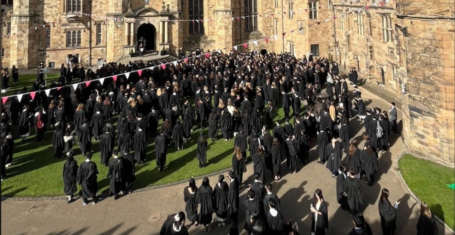
Durham has the second highest proportion of privately educated students in the UK
39.1 per cent of Durham students are privately educated, over four times higher than the national rate of 8.9 per cent
The Times and The Sunday Times’ Good University Guide considered the proportion of students who had attended private school as part of their criteria for their recent rankings, in which Durham finished in a superb position of fifth.
More can be found out about how the data was gathered here.
The university with the highest proportion of privately educated students was the Royal Agricultural University, with a rate of 39.5 per cent. Durham finished as a very close second at 39.1 per cent – approximately 6-7 per cent of children in the UK are privately educated. This rate does increase to 8.91 per cent for university students, with HESA reporting that 114,055 of 1,279,350 UK university students (excluding those who received education that was “unknown” or “not classified”) in 2022/23 were privately educated.
21 of the 24 Russell Group universities came in the top 30 most privately educated student bodies, with only Queen Mary University of London, Queen’s University Belfast and the University of Sheffield finishing outside of the top 30.
The non-Russell Group universities to make up the rest of the top 30 were Royal Agricultural, St. Andrews, Bath, Oxford Brookes, Buckingham, Loughborough, Harper Adams, Reading and Aberdeen.
Durham scored slightly higher than both Oxford and Cambridge, who recorded scores of 31.4 and 28.2 per cent respectively. Just behind Durham were St. Andrews and Imperial College London, who scored 36 and 33 per cent respectively.
Most Read
Durham’s rate of 39.1 per cent in 2024 is marginally higher than the 38.4 per cent recorded in 2022, and is exactly the same as the 2023 score of 39.1 per cent. The Telegraph reported that 39.5 per cent of 2015/16 entrants were privately educated, indicating that this score of just below 40 per cent appears to be a consistent trend rather than a one-off anomaly.
This comes despite Durham University’s commitment to widening access, facilitated largely through the programme of contextual offers and by working to increase the amount of students coming from the local north-east of England. Durham University’s Access and Participation plan for 2024/25 outlines the steps they are taking to increase the proportion of underrepresented students.
The Access and Participation Plan for 2024/25 also says:
“The number of students from low participation neighbourhoods who come to Durham has increased significantly since the start of the plan from 183 to 409, which means in 2021 they represented 8.8% of Durham’s intake.
“This is ahead of where we expected to be, but we nevertheless intend to continue to do more to support this cohort.
“Similarly, the number of home undergraduate Black heritage students at Durham has also increased – 235 studying with us in 2021 compared with 170 in 2018. This is a 38.2% increase in three years.”

















